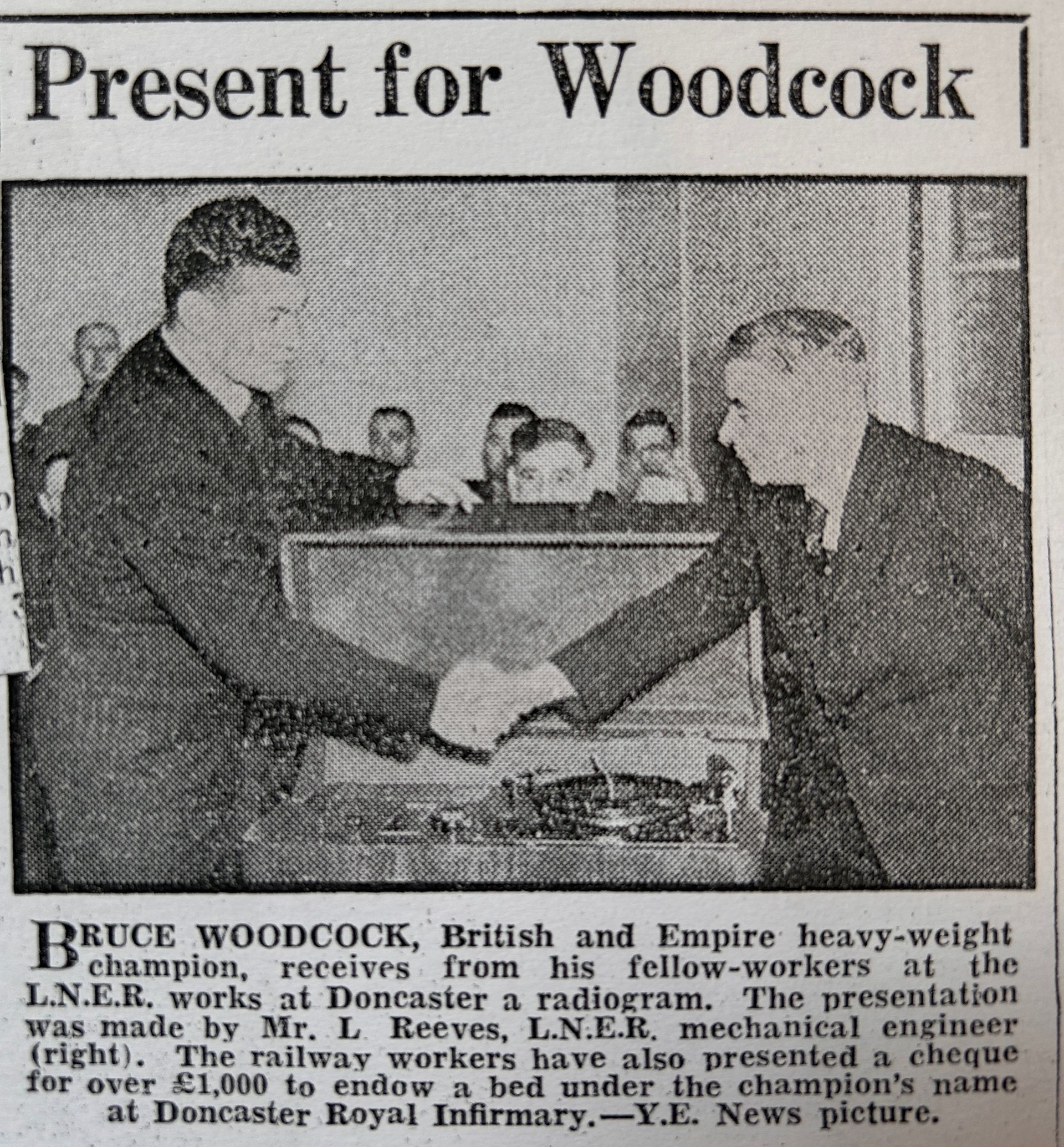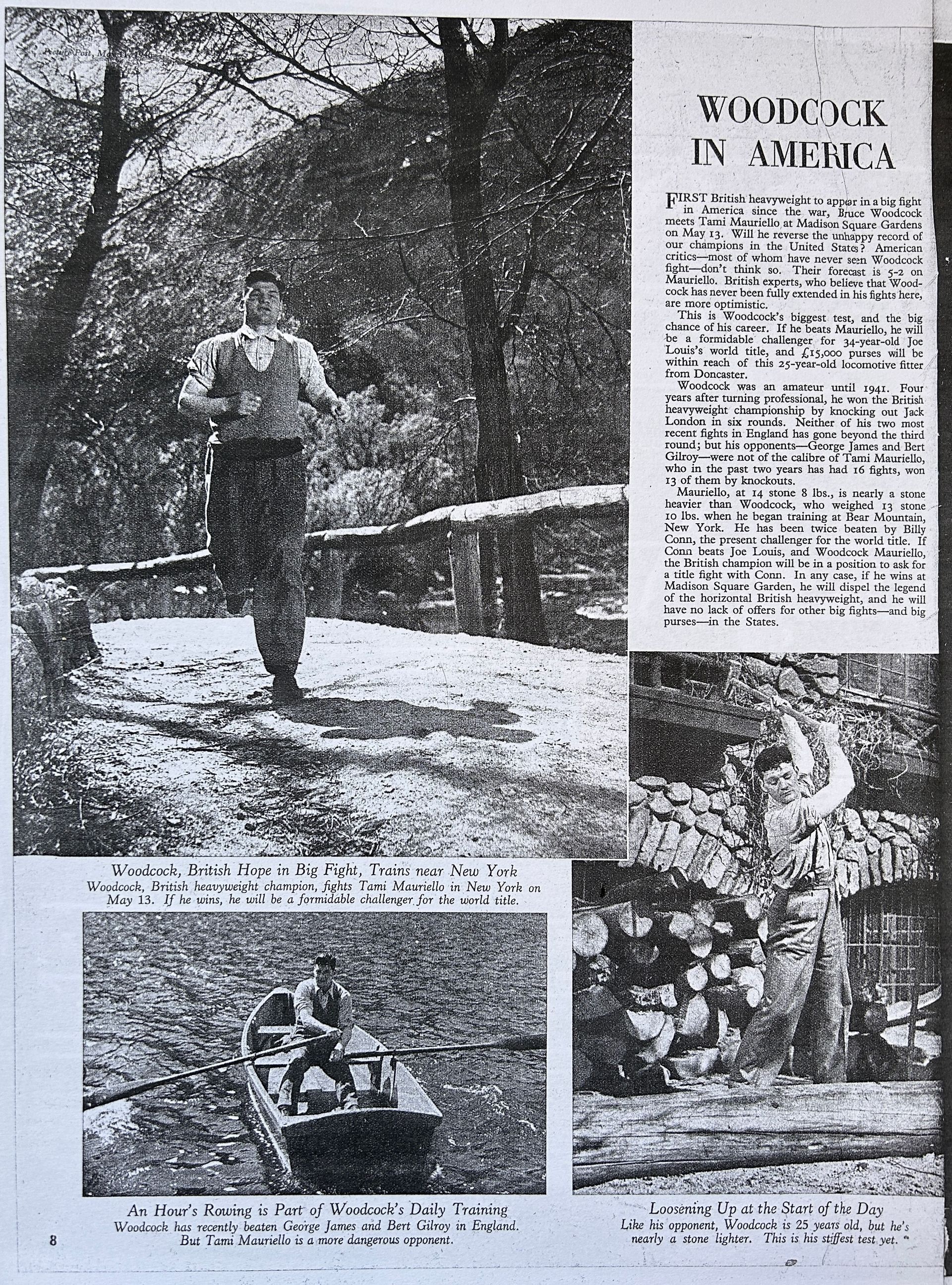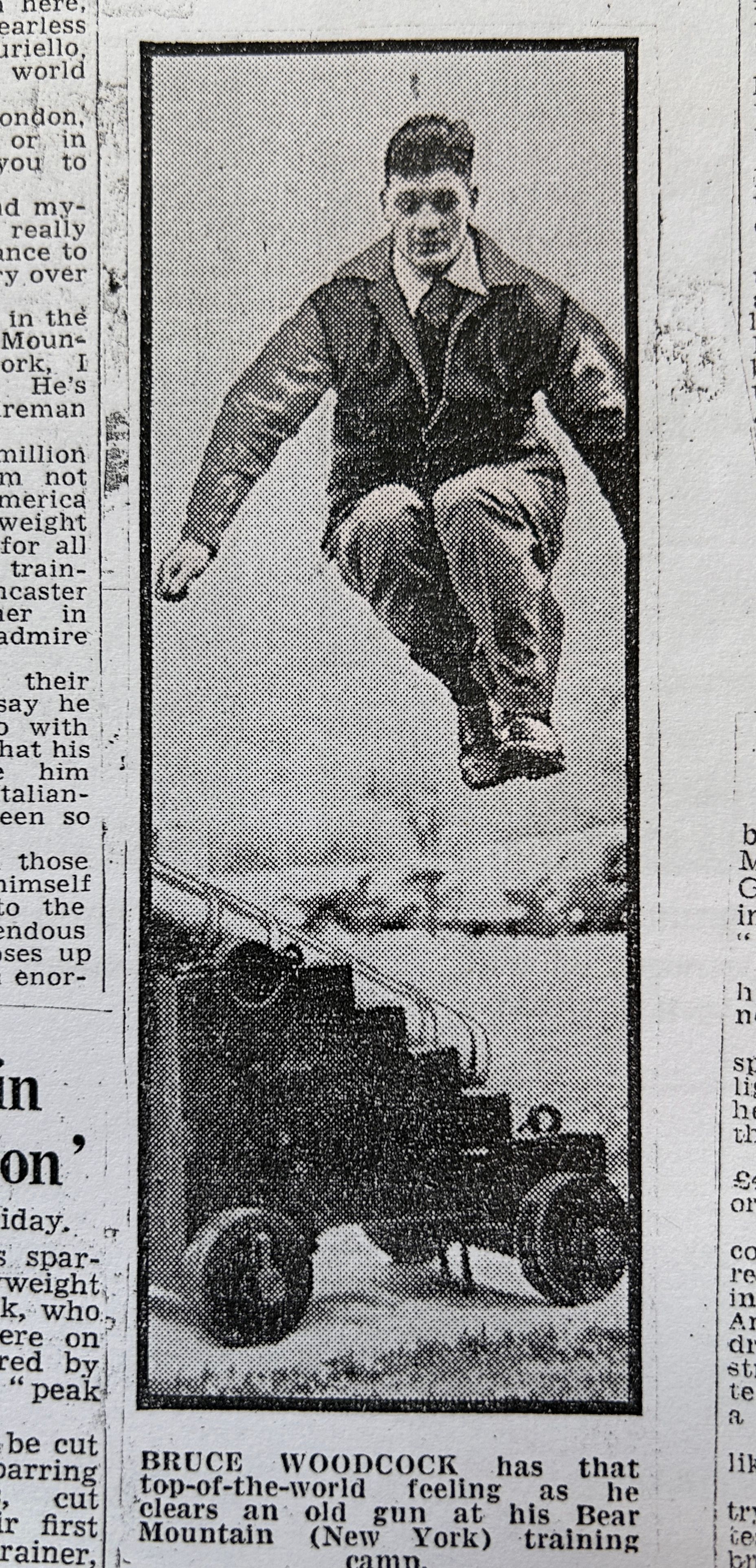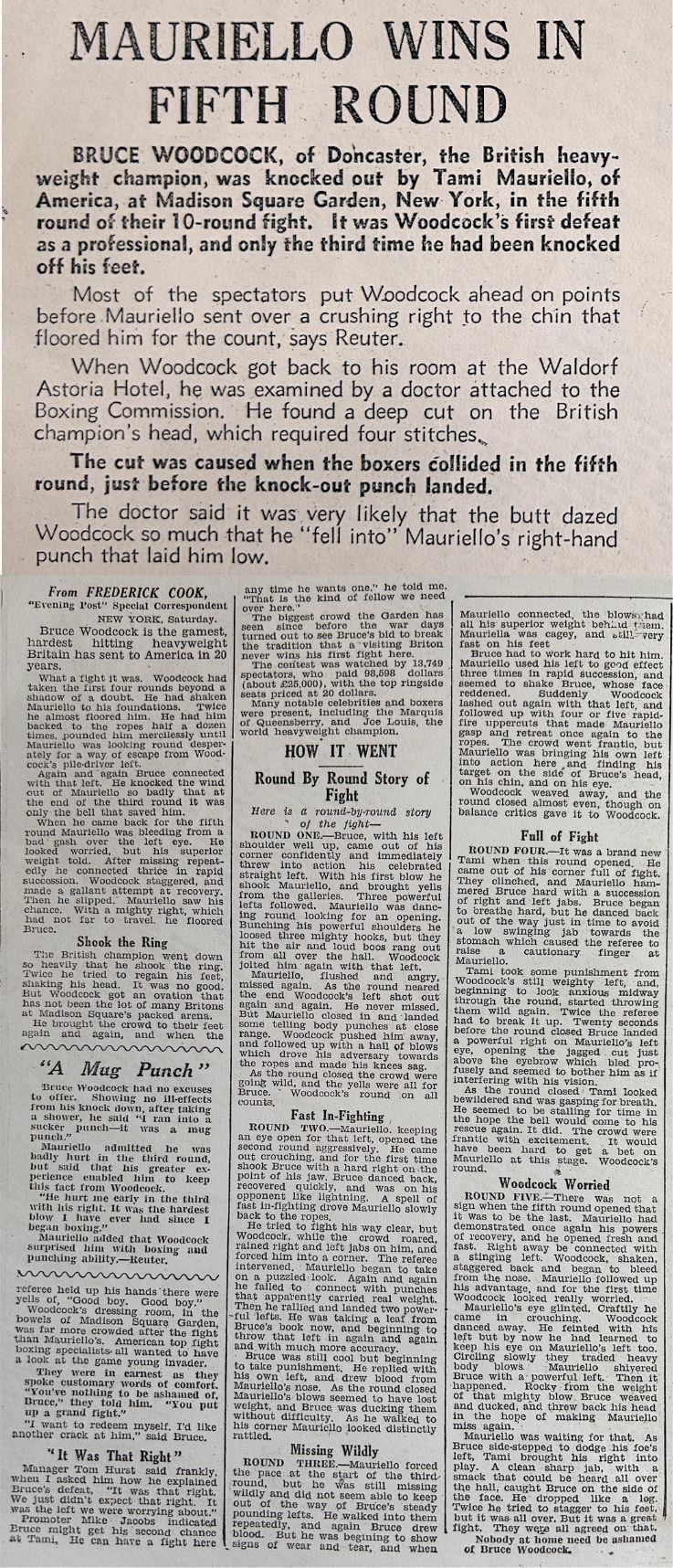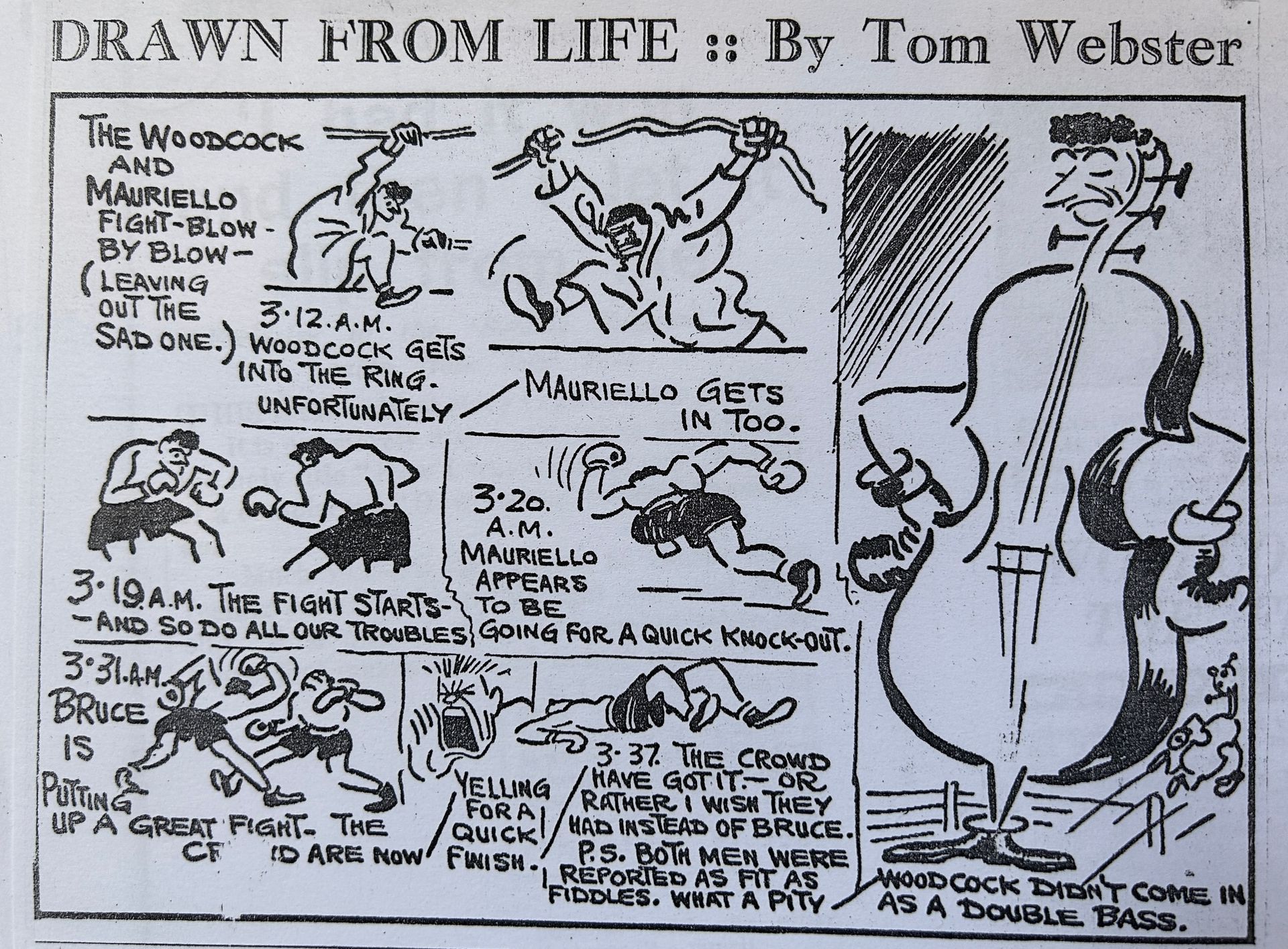On Thursday 12th April, the day before he was due to fly to America to prepare for the fight on 13th May, he was presented with a radiogram from his fellow-workers at the L.N.E.R. works in Doncaster, with various photos of him with workmates. The railway workers had also had a collection and raised over £1,000 to purchase a bed for Doncaster Royal Infirmary in Bruce’s name in recognition of his achievements.
On the Friday morning, Bruce left home at 1, Mona Road and drove to Doncaster station to catch the 8.40 to King’s Cross, for the 20-hour flight to New York. It included a breakfast of steak and eggs. He arrived at La Guardia airport with Tom Hurst to be met by a crowd of some 200 fans. He apparently made a big impact on New York newspapermen with his dry, laconic Yorkshire humour and quiet, shy manner, and received bigger press notices than any other visiting fighter for many years. And his popularity in the US grew tremendously after his arrival.
Pathe news report of Bruce boarding flight [2 mins in]

